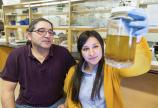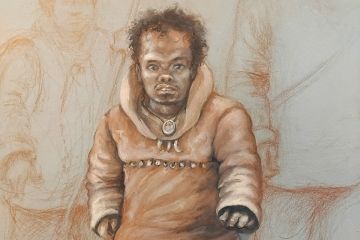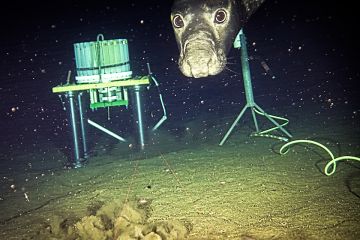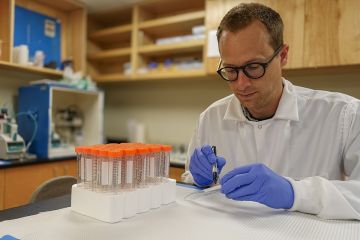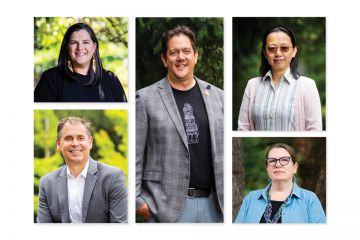Salmon at stake
- Vimala Jeevanandam
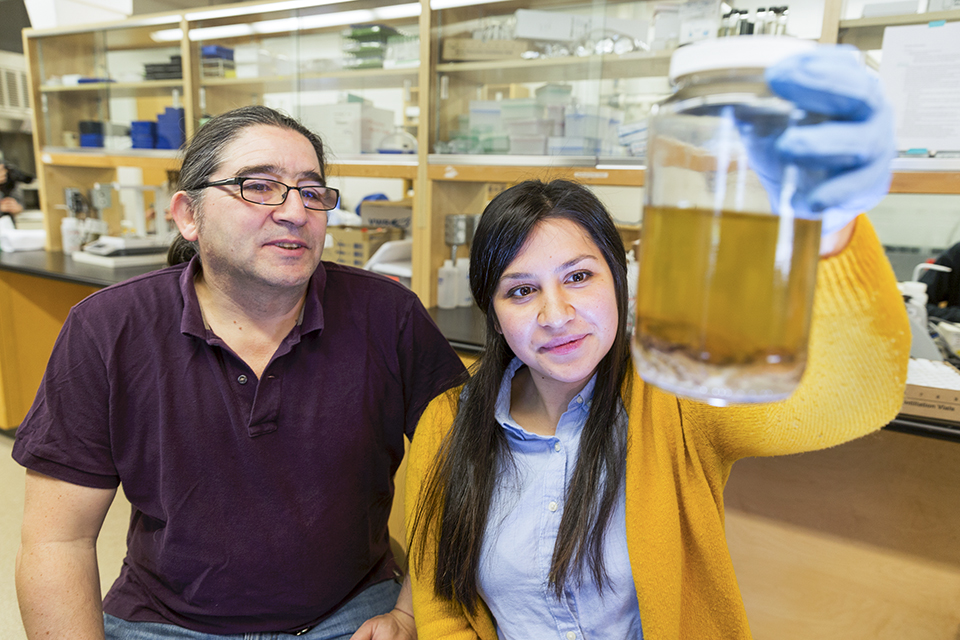
Project investigates what young salmon need to grow and thrive as they enter the ocean
Salmon returning to the rivers of Vancouver Island to spawn have always had a long and perilous migration route. But in the past 10 years their time away has become deadlier than ever, with populations dropping precipitously.
This decline has led to the restriction or closure of culturally and economically important fisheries, and is threatening the survival of species that depend on salmon, including the iconic and endangered southern resident killer whales.
While many factors have contributed to the dwindling numbers of salmon—historic overfishing, warming ocean temperatures, reduced river levels, hatchery competition, freshwater habitat destruction, and disease—it’s difficult to pin down the most significant causes.
“If we don’t know why the returning numbers of Pacific salmon are so low, we can’t take effective measures to protect them and the many species that depend on them,” says Francis Juanes, a University of Victoria fisheries ecologist and Liber Ero Chair in Fisheries Research.
Juanes believes that many causes of salmon mortality occur early in life. “Juvenile salmon leaving freshwater and entering the Strait of Georgia are undergoing major physiological changes as they adapt to the ocean,” he says. “It’s a stage where they’re very vulnerable to changes in their environment and that’s a stage we know very little about.”
Through the Salish Sea Marine Survival Project—a bi-national initiative to determine the primary factors affecting the survival of juvenile salmon and steelhead in the region—Juanes and his team are working with Fisheries and Oceans Canada and others on Cowichan River chinook salmon to discover what they’re eating and how they grow. They’re also tagging the fish to track their migration patterns and detect if and when they return to spawn.
In addition, the team is looking at how the salmon use nearshore foraging habitats such as eelgrass meadows and kelp forests. Good nourishment from these habitats allows them to grow quickly enough to avoid predators and survive into adulthood.
Unfortunately, these vital habitats are being rapidly degraded by shoreline development, overwater structures such as docks and marinas, and more subtle forms of human disturbance, such as climate change.
“Food sources may be responding to climate change in different ways than the salmon themselves,” says Juanes. “This could cause a mismatch between when young salmon are entering the ocean and when their food is available.”
To test how sockeye and chinook salmon are responding to climate change, his team uses a combination of lab tests and examination of a structure in a fish’s inner ear known as an otolith. Researchers can learn a lot about a salmon’s life from an otolith—from its daily growth to when it entered salt water.
“There’s a distinct mark on the otolith showing that change,” says Juanes. “We can even see how fast they grow and infer how quickly they migrate.”
Juanes is also looking at how noise pollution may be impacting salmon health and survival. Sounds of marine traffic and underwater mining echo throughout the ocean, interfering with the ability of salmon to communicate, find prey and avoid predators.
“Salmon are fascinating species, beyond how good they are to eat,” says Juanes. “We’re just beginning to understand the complexity of their life cycles, and this understanding is irrevocably linked to their recovery.”
EdgeWise: learn more
Salmon are integral to the culture and livelihood of BC’s Indigenous peoples and to the economy of coastal communities. They’re vital to overall health of the coastal ecosystem, nourishing everything from bears to killer whales to trees.
The five salmon species on the Pacific coast all spawn in freshwater but mature in the ocean. All salmon die after spawning. Each stock shows unique traits including migration route and timing, and productivity. Maintaining this genetic diversity along the coast is essential to salmon recovery.
Chinook, also known as springs or kings, are the largest of the five Pacific salmon species, historically reaching record weights of more than 50 kg. They spend up to two years in fresh water and may travel vast distances in the Pacific Ocean before they return to spawn in their natal streams after two to seven years.
The Salish Sea Marine Survival Project is a collaboration of more than 60 organizations tackling the decline of salmon in the Salish Sea.
UVic is a national and international leader in ocean health research, with strengths in ocean observing, climate modelling, marine ecology, and ocean chemistry and physics. Working with coastal communities, governments and other stakeholders our researchers explore how climate-forced changes can be managed to support ocean sustainability.
Photos
In this story
Keywords: research, wildlife, fisheries, oceans, philanthropy, salmon, whales, biology, ecology
People: Francis Juanes
Publication: knowlEDGE

